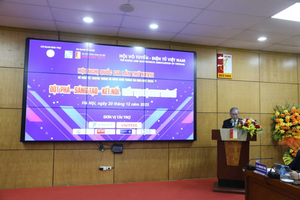
Vietnam has set its sights on becoming a frontrunner in next-generation telecommunications. While the nation is still striving to fully commercialize 5G networks, it has already begun laying the groundwork for the advent of 6G.
The Vietnamese government has been proactive in fostering a robust telecommunications infrastructure. The year 2024 was designated as the year for nationwide 5G commercialization, and the Ministry of Information and Communications (MIC) conducted spectrum auctions to facilitate this goal.
However, despite significant investments and trials by major telecom operators such as Viettel, VinaPhone, and MobiFone, the widespread commercialization of 5G has been slower than anticipated.
Viettel, for instance, has conducted 5G trials in 61 provinces and cities. In July 2023, it launched a 5G Private Mobile Network (PNM) for smart factories in Vietnam. Nonetheless, the company has yet to announce concrete plans for 5G commercialization.
In mid-2024, MobiFone also unveiled plans to deploy 1,000 new 5G base stations and upgrade its core network to support 5G services. Despite these efforts, MobiFone's network currently only offers 4G coverage.
Similarly, after successfully bidding for the 3700-3800 MHz (C2) spectrum in March 2024, VinaPhone announced its 5G deployment plans. The company prioritized infrastructure development to enhance user experience and focused on deploying 5G in areas requiring high interaction, real-time network communication, and in technology hubs, urban areas, and universities. However, a specific timeline for 5G commercialization has not been disclosed.
Prior to these developments, the Prime Minister approved the Information and Communication Infrastructure Plan for the 2021-2030 period, with a vision to 2050, as outlined in Decision No.36/QD-TTg dated January 11, 2024.
The plan set ambitious targets that by 2025, the average minimum download speed for 5G networks should reach 100 Mbps, and by 2030, 5G coverage should extend to 99 percent of the population. To achieve these goals, 2024 was deemed the ideal time to grant licenses for 5G commercialization, which the MIC promptly implemented. Nevertheless, the actual commercialization of 5G has been delayed due to challenges faced by the telecom operators themselves.
While the 5G network remains incomplete, discussions about 6G are already underway. Experts predict that each new generation of networks is typically deployed within a decade, and 6G is expected to be commercially available by 2030. Some estimates suggest that the completion of 6G standards and their early commercialization could occur as early as 2028, with widespread commercialization following in 2030.
Therefore, MIC has established a 6G device development group comprising 14 members. This group is tasked with assessing, testing, and evaluating 6G devices, reviewing relevant legal frameworks, and proposing regulations for 6G device management. Additionally, the group is studying international experiences in 6G development strategies and proposing recommendations for adaptive implementation in Vietnam.
Previously, MIC had formed a Steering Committee to promote 6G research and development. This committee focuses on researching and proposing policies, strategies, mechanisms, and legal frameworks to foster the development of 6G standards, applications, information security, device manufacturing, and commercialization of 6G services in Vietnam.
Recently, in a meeting with telecom operators and other stakeholders, Deputy Minister Pham Duc Long of Information and Communications stated that there are currently five global 5G device manufacturers and that many countries are engaged in 6G research. Vietnam aims to keep pace with global 6G development by participating in research, production, and deployment.
The Deputy Minister emphasized Vietnam's intention to contribute to global 6G standards and encouraged domestic collaboration among experts, universities, and research institutes. He also highlighted the need for international cooperation and the importance of government investment in research laboratories to support 6G development.
Telecoms experts informed that while 5G networks can achieve speeds of up to 20 Gbps, 6G networks are expected to reach terabit speeds (Tbps), which are several hundred to several thousand times faster. Beyond providing high-speed connectivity to a vast array of devices, 6G networks will also integrate four crucial components of data, humans, processes, and physical devices into a unified system.
























